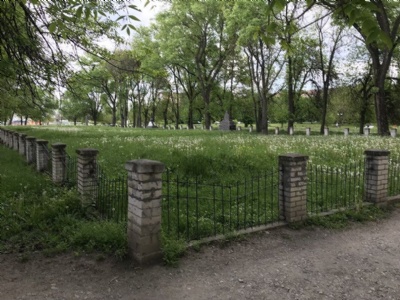Kamjanets – Podolskyj
In southwestern Ukraine, and close to nothing, lies Kamjanets-Podolskyj and there lived at the outbreak of the Second World War about 14,000 Jews. On July 11, 1941, the city was occupied by german and hungarian troops and after a few days the first Jews were murdered. The Germans installed a local government of ultranational ukrainians who promptly imposed anti-Jewish regulations and acts. It was also set up in early August a smaller ghetto in the old part of the city. In July and August 1941, 10,000 Jews were deported to Kamjanets-Podolskyi from a border area in western Ukraine called Transcarpatien. These Jews were first put in an old fort but later moved to the ghetto where the local Jews lived.
The large number of Jews meant that the German military authorities could not provide for them. Therefore, the chief police officer in the area, SS-Obergruppenführer, Friedrich Jeckeln, proposed that the Jews be murdered. On August 26, 1941, the hungarian Jews were ordered to leave the ghetto on the pretext that they would be relocated. Instead, they were taken to an old ammunition depot north of the city where they were forced to hand over their possessions, undress and then run to specially set up executions sites. There they were shot by German police forces and buried in pre-dug graves.
During the next two days, local Jews were also murdered at the same place. A total of 23,000 Jews were murdered in three days. This makes the killings in Kamjanets-Podolskyi the single mass shooting reaching five-digit number of victims. About 5,000 Jews were selected for slave labor and put into a new ghetto just west of the old ghetto. In the summer of 1942, about 800 Jewish children and elderly were murdered at the Jewish cemetery. In late October, early november, 1942, the remaining Jews were murdered in the ghetto. A total of 30,000 Jews were murdered in Kamjanets-Podolskyi.
Current status: Monument (2019).
Location: 48°42'01.75"N 26°34'10.10"E
Get there: Car.
Follow up in books: Arad, Yitzhak: Holocaust in the Soviet union (2009).







The killings at Kamjanets-Podolskyi is in my opinion a top historical significant event. It was there that the Nazi mobile killing squads carried out the first five-digit murder action. This did not mean that the site became a prototype for how the extermination of European Jewry would be carried out. But its scope gave it, in my opinion, a central place in the Holocaust. Yet it is less remembered than, for instance, the killings in Babi Yar and Riga.
I have had Kamjanets-Podolskyj on my radar for about ten years, but its geographical location and the transport issue were always a problem. And it did not make it easier when the GPS network in Ukraine didn’t have full coverage. Travelling by car into the Ukrainian countryside without GPS was nothing I considered. But in 2019 Ukraine came to be fully covered and new opportunities appeared. All of a sudden, Kamjanets-Podolskyi was within reach.
Another problem I encountered over the years was the location of the monuments. I knew what they looked like from photographs, but didn’t know where they were. Only in 2019 and with the help of Google Earth, did I manage to locate the monuments and other significant places. As a city, Kamjanets-Podolsky surprised me and is much more modern than I imagined. Likewise, the monuments which, although several of them are erected during the Soviet era, are well-managed, easy to find and are within what now is a integrated district of the city.